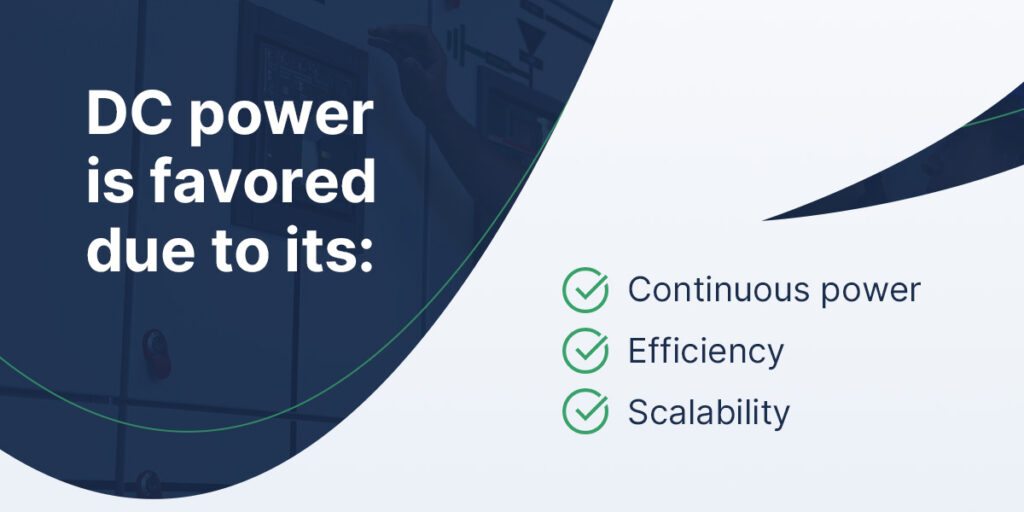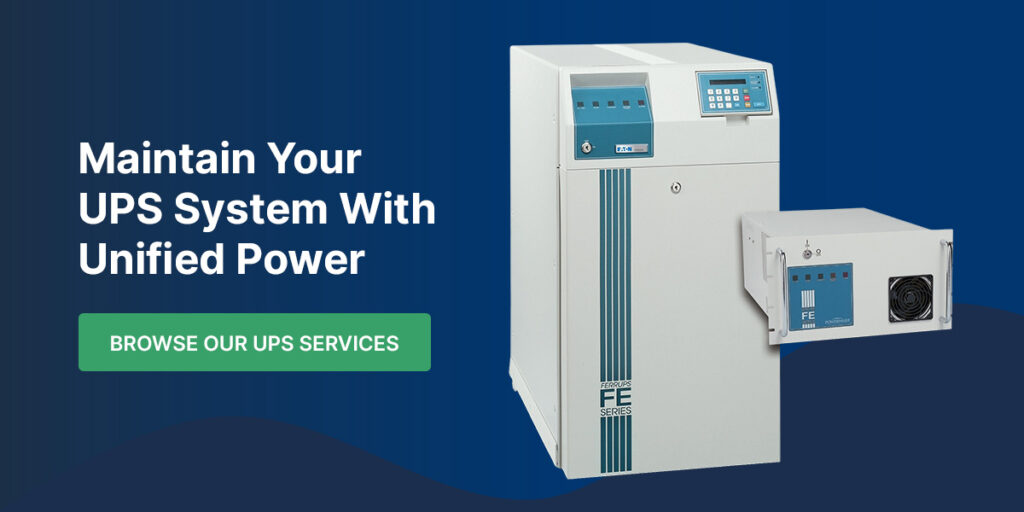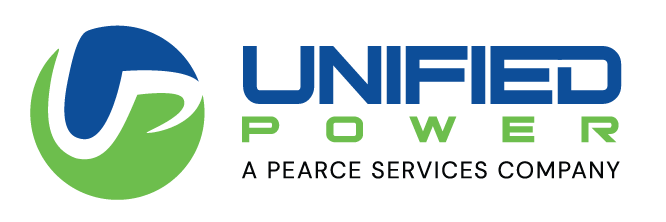All industries need power. From you’re in telecommunications to infrastructure to aerospace, power drives success and businesses rely on direct current (DC) electricity to keep them operating year-round. Facility managers can invest in DC power systems to deliver uninterrupted power without sacrificing efficiency.
Other power solutions such as alternating current (AC) are less efficient and stable than DC power. If downtime is not an option for your operations, you need to understand how DC power systems work.
What Is a DC Power System?
DC power uses direct current to deliver electricity. This means that the electrical current flows in one direction, creating a stable, reliable power supply to equipment and devices. While DC systems work well for industrial operations, the utility grid transmits power through AC. A DC power system takes this AC electricity and converts it to DC power, then supplies it to connected equipment. An uninterruptible power system (UPS) uses DC power to provide an emergency supply to your facility. Most UPSs convert AC to DC and sends the converted electricity to batteries and backup systems. Then they are ready to provide temporary support during an outage. There are also DC UPS systems, which takes incoming DC power and charges the batteries, like an AC UPS but without converting electricity. With a quality UPS, your equipment can seamlessly transition to backup power when the main supply goes down. However, a UPS is designed to provide a limited power supply and is not meant as a long-term solution.
DC vs. AC Power Systems
The main difference between DC and AC power systems is electron flow. In AC systems, the electrons flow in both directions, switching periodically. DC systems send electrons flowing in the same direction the entire time. This electron flow dictates the system’s efficiency, reliability and use. AC power works better for long-term voltage transmission, while DC offers steadier voltage levels and is more effective when used in battery storage, electronic vehicles and electronic devices.
Key Components of DC Electrical Systems
A DC power system uses various components to deliver power to connected equipment. Specific systems may have different parts based on their function, but the basic components include:
- Rectifier: The rectifier converts AC from the power grid to DC. With the rectifier converting power, your system can power any DC-reliant equipment and backup batteries. If your system includes a UPS, the rectifier needs to be able to convert power for the supported loads and charge the backup power supply. They can even regulate voltage and current, ensuring your devices receive consistent power.
- Batteries: Batteries are a source of DC power but aren’t part of what is required to convert AC to DC power. However, in UPS systems, the batteries store the backup power needed to keep critical systems running during outages. The batteries kick on when primary power fails to immediately support essential infrastructure. Industries such as telecom rely on backup power to maintain towers during outages, while healthcare facilities use them to support critical systems.
- Controller: The controller watches over the system, as a variety of measures from battery health to system load require constant monitoring. If components perform incorrectly, the controller will alert you, helping operators spot issues before they lead to downtime.
- Distribution system: Once the rectifier converts the power, it goes to the distribution system, which sends power to all connected devices. The system distributes power based on equipment requirements and future load.
- Enclosure: The system is enclosed by a protective exterior that is designed to keep dust, moisture and changing temperatures from impacting its ability to work effectively.
Why Use a DC Power System?
Choosing between AC and DC power affects your entire operation because the current determines how efficient and reliable the power is. AC is better for long distances and home use, thanks to its ability to be easily stepped up or down to make transmission more efficient. DC power is not easily adjustable since the electrons flow in one direction. Because the power arrives as AC for residential use, it’s easier to make appliances AC to avoid conversion.

However, DC power systems are better suited for many industrial applications. The unidirectional current makes DC more stable than AC, providing industries with reliable power. In these applications, DC power is favored due to its:
- Continuous power: DC’s constant flow means more continuous power. In telecom, for example, cell towers and network hubs run on DC to ensure continuous service. Because backup batteries are DC power sources, they automatically kick on when an outage occurs.
- Efficiency: With no stepping up or down like AC, DC power creates a more efficient process. The constant voltage means less waste for systems, and power from DC power plants experiences even less energy loss. Industries such as aviation rely on DC power’s stable, efficient power to control critical systems and battery storage systems.
- Scalability: DC power enables organizations to add more batteries, rectifiers or controllers to easily expand operations. Businesses are able to scale as needed without the conversions or adjustments required by AC systems.
How to Choose the Right DC Electrical System
When considering DC power systems, it is important to understand how to choose the best option for your needs and to ensure optimal power, backup support and safety. Take into account these factors to find the best fit for your facility:
- Redundancy: Redundancy protects your operation in the event of system failures. Redundant components include controllers, rectifiers and batteries; the more critical the application, the more redundancies you’ll need to avoid failures.
- Efficiency: Efficiency directly impacts operating costs because high-efficiency systems minimize energy loss when converting AC to DC. Modern systems use active load sharing to distribute power efficiently, reducing system strain. A quality rectifier keeps waste down, saving money and power.
- Scalability: If you expect power demands to increase, consider a scalable solution. Modular DC UPS systems are a great choice for scalability as they enable expansion without major system overhauls.
- Battery type: Depending on the application, a DC or UPS system will use different types of batteries. Consider your budget, battery maintenance and overall lifespan.
- Enclosure design: Enclosures protect the system and dictate its overall size. Industrial settings require higher-rated enclosures to protect the system. Consider compact enclosures for spaces with size constraints.
Stay up and Running With Unified Power
Whether you’re looking for DC plant maintenance services or UPS solutions, United Power can help. Our services are designed to keep your critical systems running without interruption. We offer comprehensive maintenance and repair services for DC power systems and UPSs, with services tailored to your needs to ensure the highest quality.
Our team is available 24/7, providing fast, dedicated customer support at every stage. Whether you need routine maintenance or emergency repair, we’re ready to keep your systems running seamlessly. With our 15-minute rule, you’ll receive clear communication on service details and expectations, providing peace of mind.
Don’t wait for a failure to disrupt operations — trust Unified Power’s expertise to protect your UPS or DC power systems. Contact us online for a quote or service!


